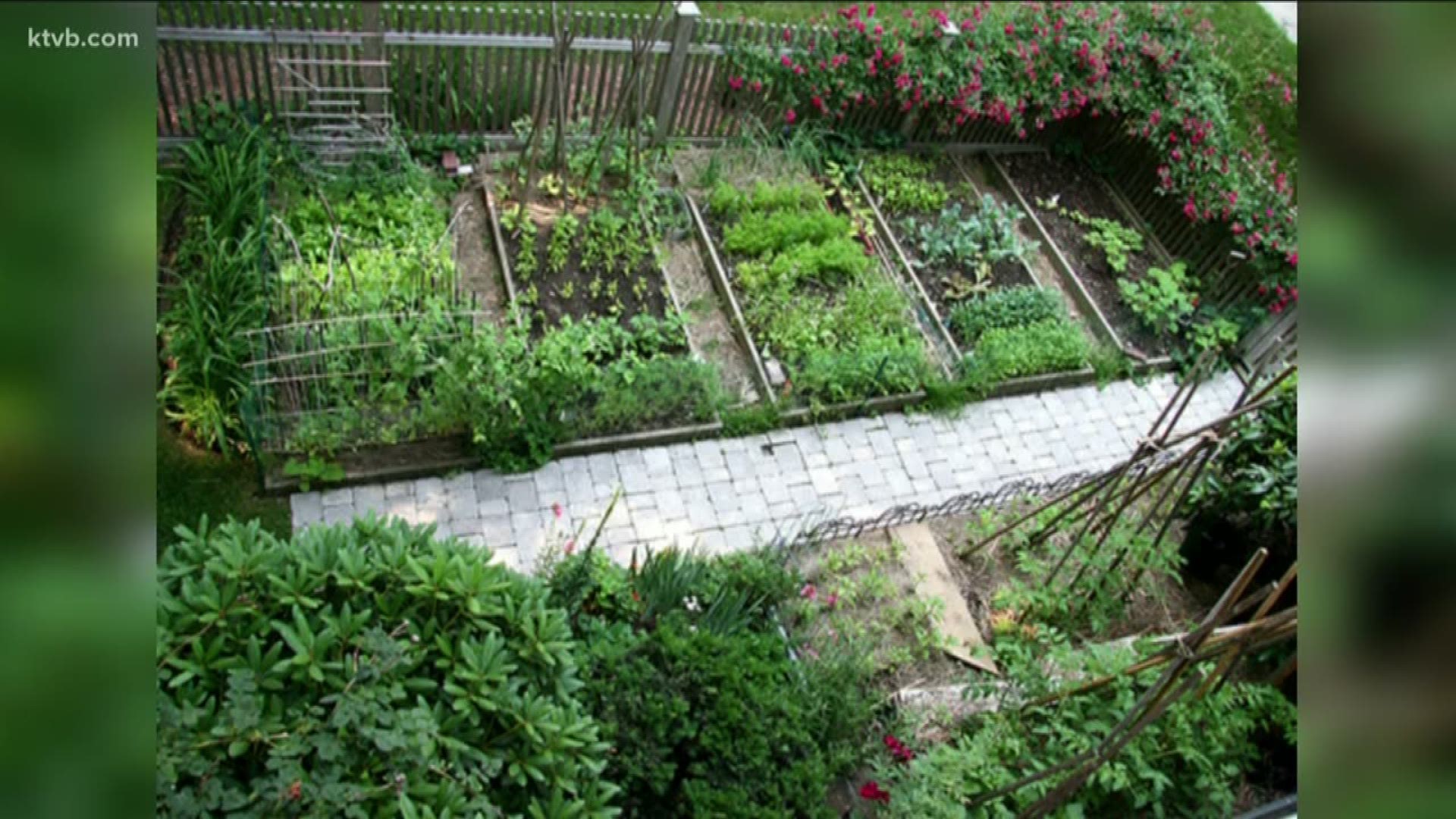BOISE, Idaho — Spring isn’t too far away, and I’ve got some great garden planning tips for you on "You Can Grow It."
Are you getting anxious to get back into your garden again? It’s still winter now, but spring isn’t too far away, and now is a perfect time to start planning and organizing your gardens and landscapes for this year.
Garden master Jim Duthie has some helpful tips for getting ready for the growing season, so that when spring does finally get here, you can grow it.
It’s mid-February. That means a little over a month to go before spring officially arrives, and I’m working on plans for my vegetable garden this year. It’s still a bit too soon to plant even the cold weather crops in the ground, whether you sow them directly from seed, or decide to buy starts and bedding plants from the garden store. The average last date of frost is still a few months away.
But it is a good time to start looking at your garden layout and design, and consider what you’re going to grow. Soon it will be time to start growing some of my seeds indoors, so they’ll be ready to transplant outdoors when it finally warms up.
Garden stores are selling seeds now, so you can beat the rush and get what you want before some of the popular varieties sell out. I get these seed catalogs in the mail and online, and while the weather is still cold, I like to page through them and get some ideas for spring planting. While the local garden stores have a wide variety of seeds for flowers and vegetables, there are some rare or unusual varieties that are only available from seed catalogs and distributors.
Besides the more common varieties, I also like to grow some heirloom varieties of vegetables. Heirloom refers to plants that are open-pollinated, generally not hybrids. Much of our supermarket produce comes from specially developed varieties of plants that have been cross bred for better resistance to pests and diseases, or to handle processing and shipping better. Some heirloom varieties have been handed down for generations, and often taste better than their hybrid cousins.
Since some of the seeds I ordered don’t come with a picture on the packet, I like to cut out the picture from the catalog and staple it to the seed packet, so I’ll have a better idea of what I’m growing.
There’s some very useful information on these packets. First, make sure you’re getting fresh seeds, packaged for this growing season, so they’ll be viable and germinate faster and produce a better crop. You can keep some seeds from previous years, and most of them will grow just fine if you keep them in a cool, dry place, but eventually they’ll become less viable.
It will also tell you how many days it takes for the seeds to germinate, and how long before the fruit or vegetable will be ready to harvest. In addition, it tells you how big the plants will get, and the proper planting depth and space between plants and rows.
I came up with my own planting chart so I can keep to a growing schedule. I note the plant name, the date I planted the seeds, the number of days until it germinates, and the number of days until the crop will be ready to pick. That way I can start the seeds indoors, so that they’ll be ready to set out in the garden at the proper time.
If you plan to sow the seeds directly in the ground later on, note that date as well. I’ve kept these records from year to year to determine which varieties have grown best in my garden. I experiment a lot with different varieties, and there are some that I won’t plant again because they just didn’t do well, or I didn’t happen to like that variety.
Whether you’re planting vegetables, flowers or landscape plants, plan out your garden space on a piece of graph paper. It doesn’t have to be exact, but be sure to include a good estimate of space, and note where other existing plants and trees are that may compete for sunlight and water. Also, mark where the water sources are, and where shade will occur at times during the day, from things such as sheds, fences and trees.
A little planning ahead now will go a long way towards having a successful garden later this year.
When you buy seeds, you may end up with more than you need, so consider going in together with a fellow gardener and share the cost and the seeds. Also, if you end up with too many plant starts, they make great gifts to give away.
By the way, Edwards Greenhouse is hosting a ‘Seedy Saturday Seed Swap,’ if you have surplus seeds to share, along with classes on seed starting and seed saving. That’s from 11 a.m. to 2 p.m. on Saturday.

